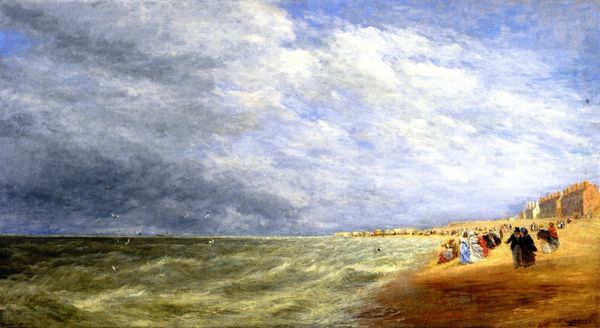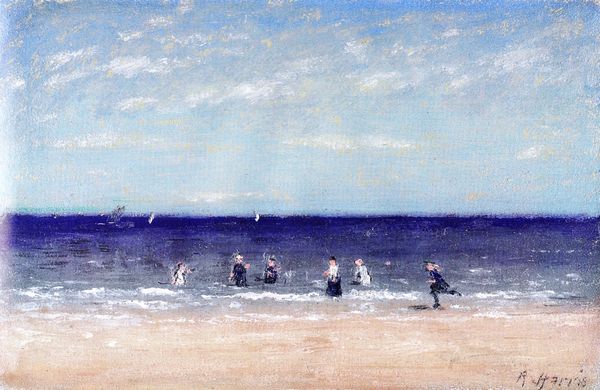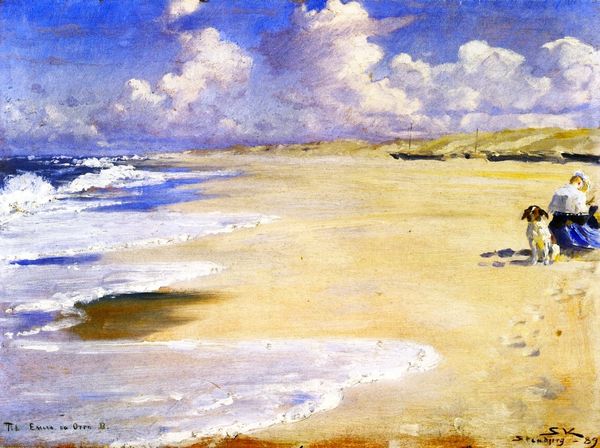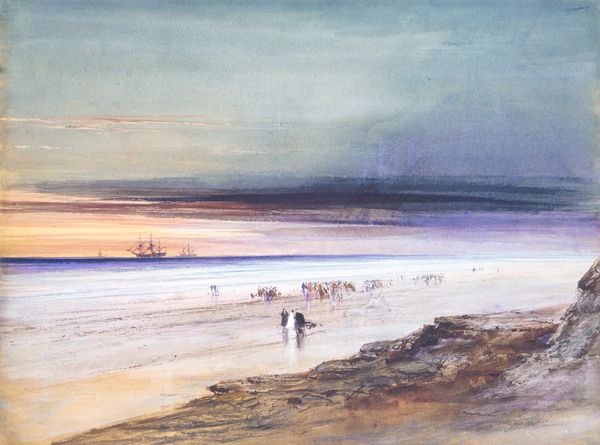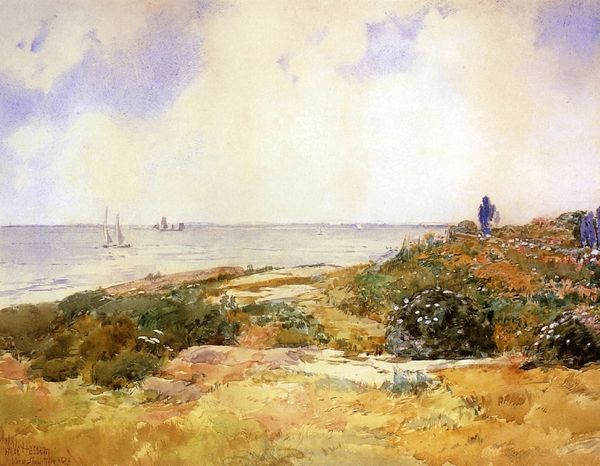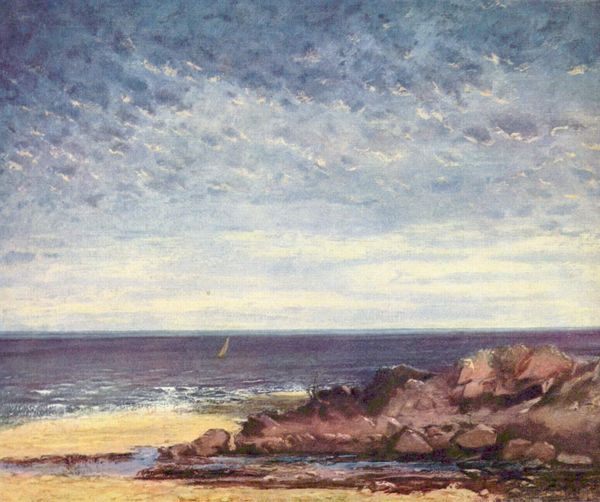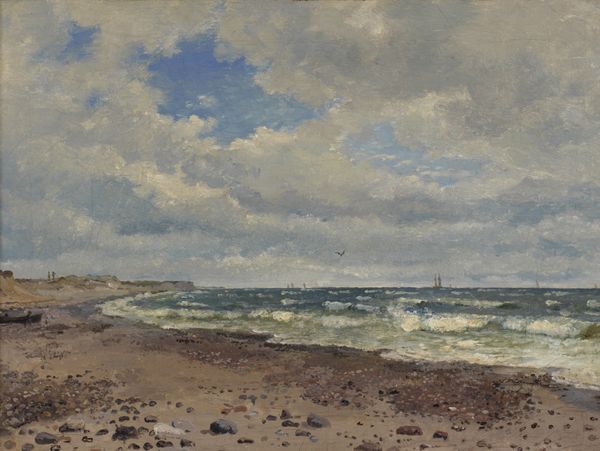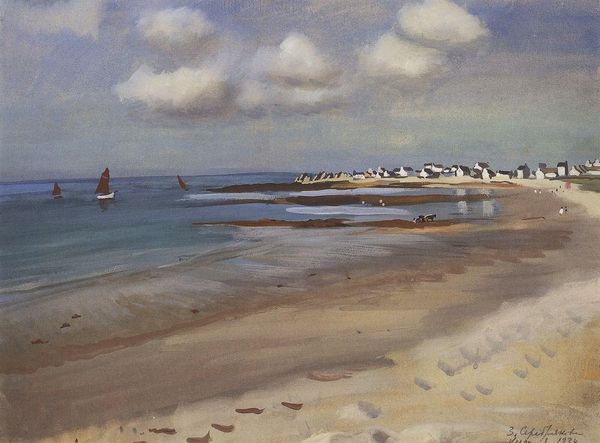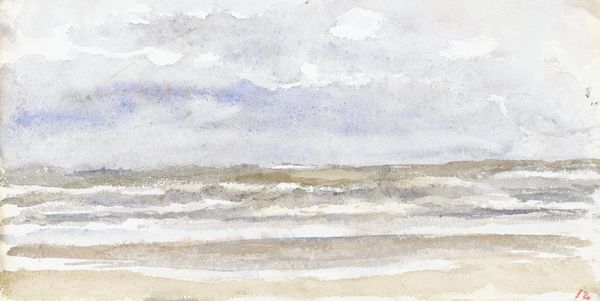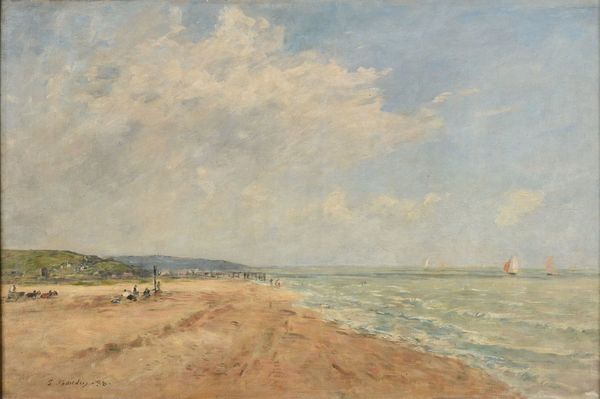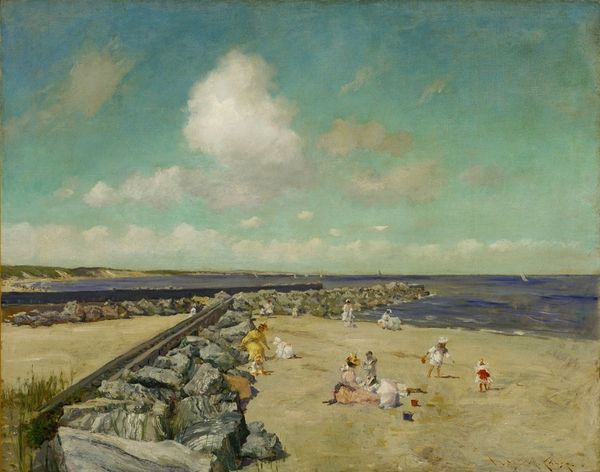
Dimensions: 71.44 x 141.92 cm
Copyright: Public domain
Editor: This is "The Beach at Zandvoort" by William Merritt Chase, painted around 1900. It’s an oil painting, and looking at it, I feel this breezy, leisurely atmosphere. The figures almost blend into the sand. What do you see in this piece? Curator: Immediately, I’m struck by the duality. On one hand, we have these ephemeral, impressionistic brushstrokes capturing a fleeting moment of leisure. But simultaneously, the beach itself, the sea, the sailing ships—they're ancient symbols. Editor: Ancient symbols? Could you elaborate? Curator: Consider the sea, Editor. It's the origin of life, the subconscious, the border between the known and the unknown. Then, look at the ships. They speak to exploration, adventure, and also vulnerability in the face of nature’s power. Does that resonate with your first impression of a "leisurely atmosphere?" Editor: Actually, that adds a layer of complexity I hadn't considered. There's this underlying sense of human activity existing within this larger, timeless scene. The fleeting fashion of the beachgoers, the constants of sand and water, how do they play off each other? Curator: Precisely! Chase seems to understand that every snapshot of contemporary life, however light-hearted, is embedded within this deeper, symbolic context. We enjoy the beach, but we carry with us millennia of cultural memory associated with these elemental images. He presents an impressionistic scene of society on holiday, set in an infinite stage. Editor: So, he’s using impressionism to depict something that transcends the momentary? It’s like the modern and the ancient are layered together. It is almost dreamlike. Curator: Yes, he offers us a perspective, a way of remembering the weight of our experience through the ages. The emotional power behind them. It is very powerful. Editor: I'll definitely see seascapes in a new light now. It’s all much richer.
Comments
No comments
Be the first to comment and join the conversation on the ultimate creative platform.
